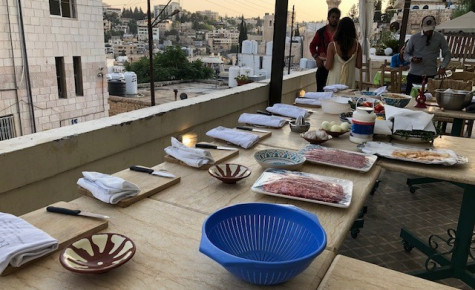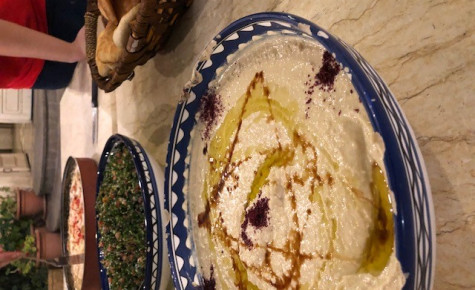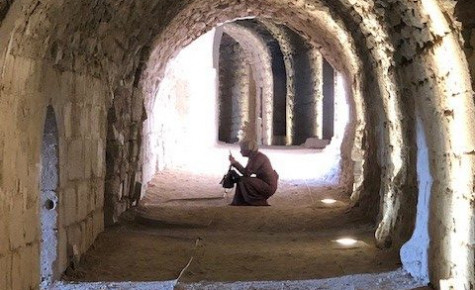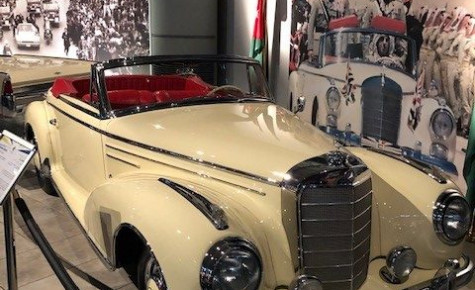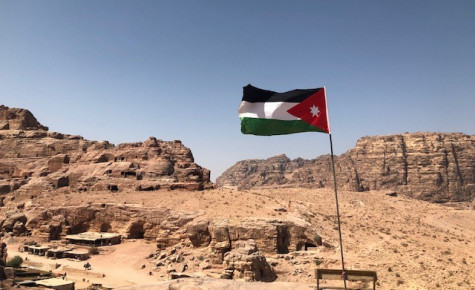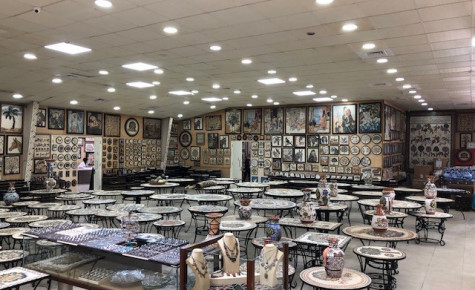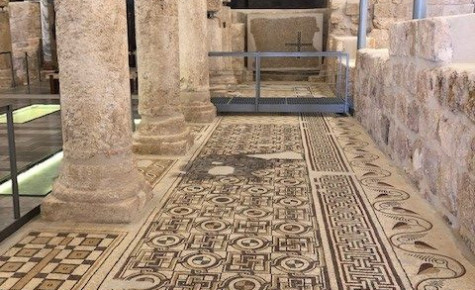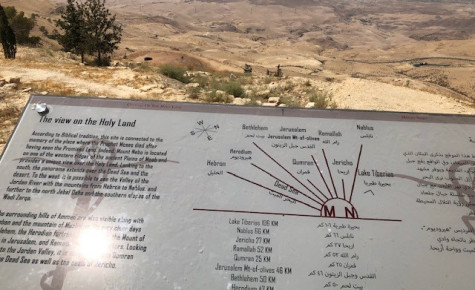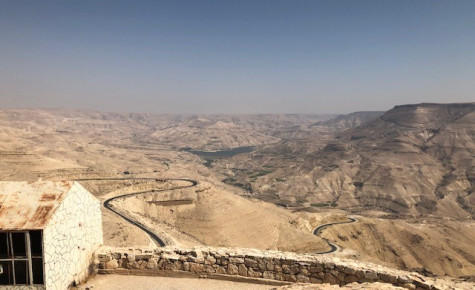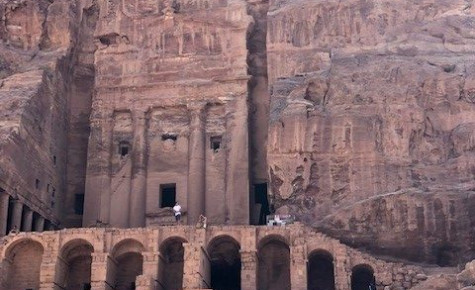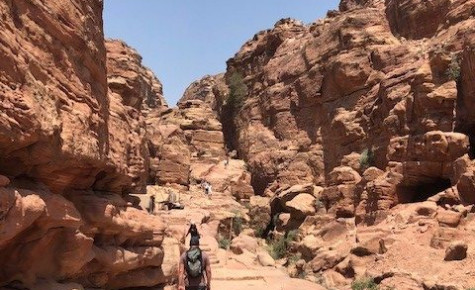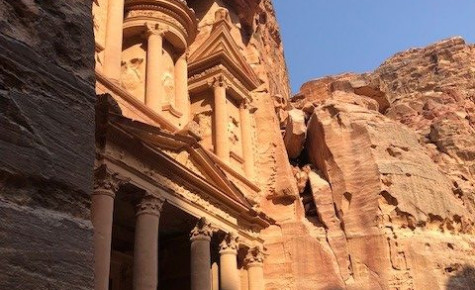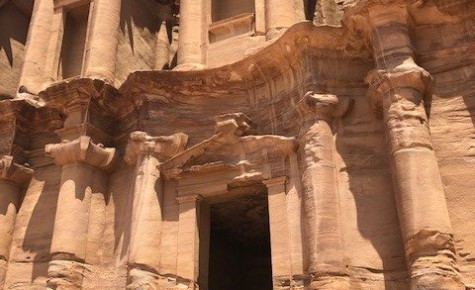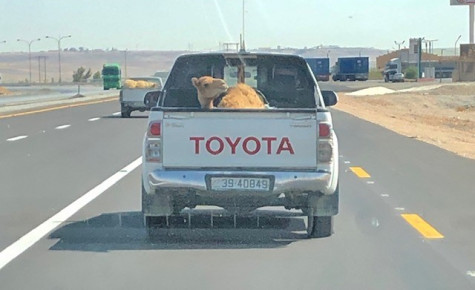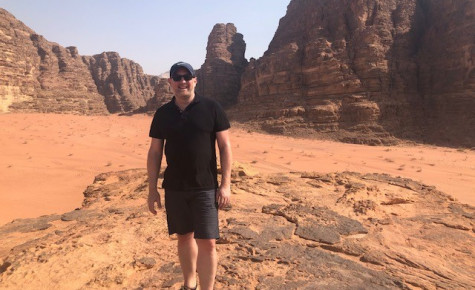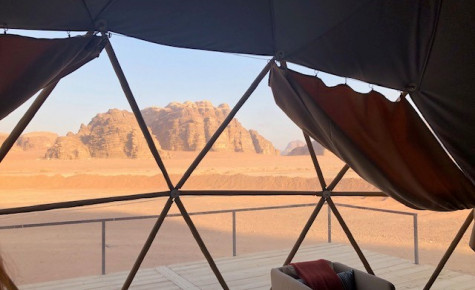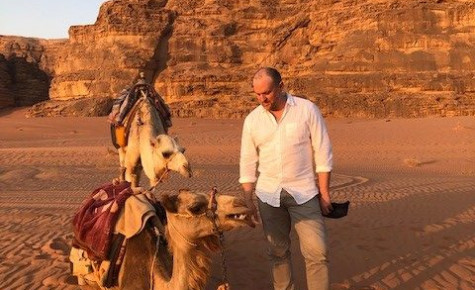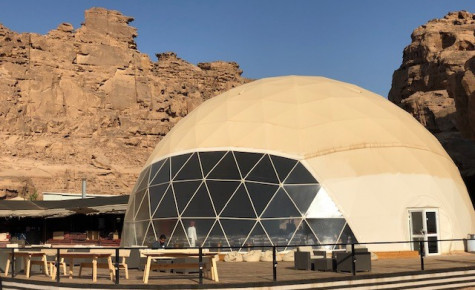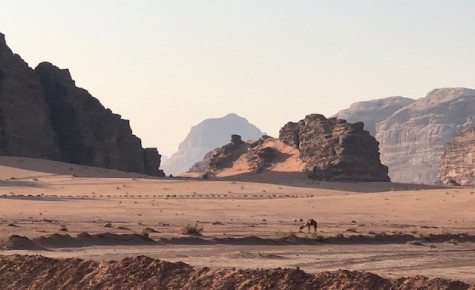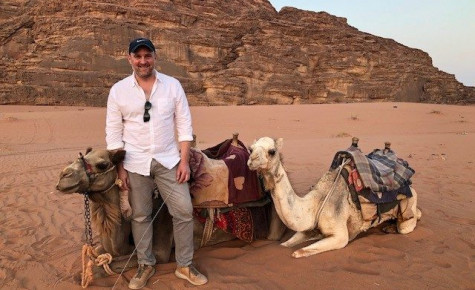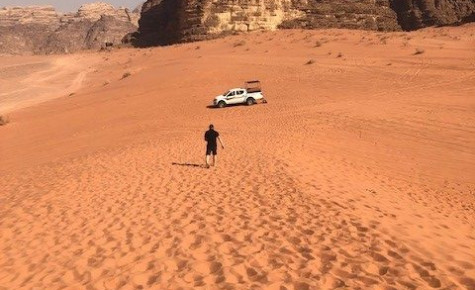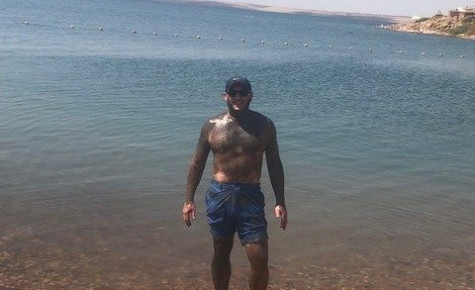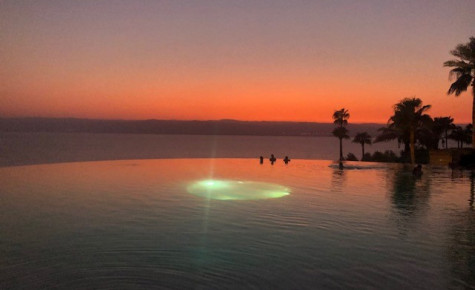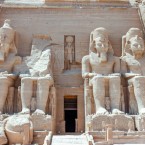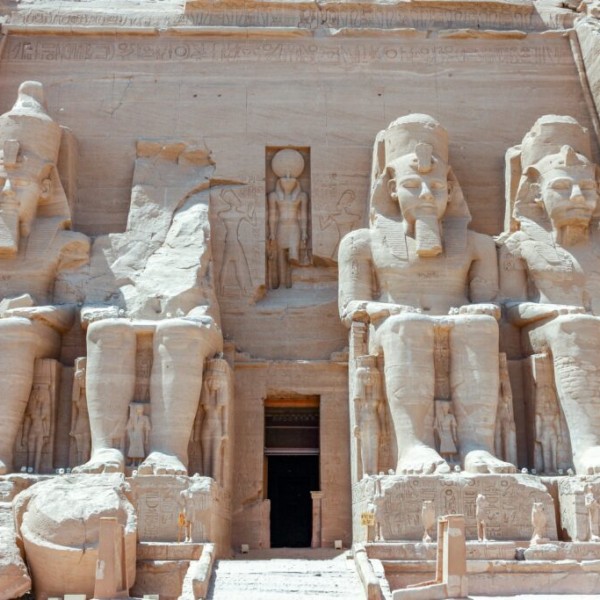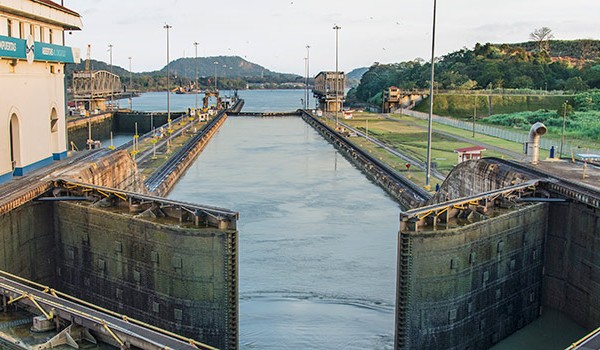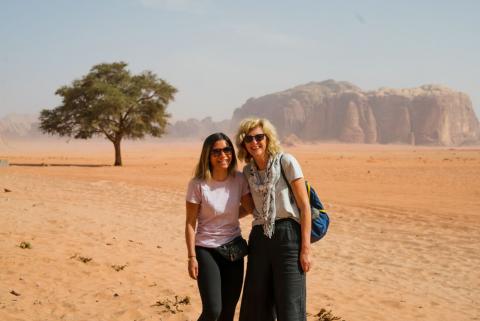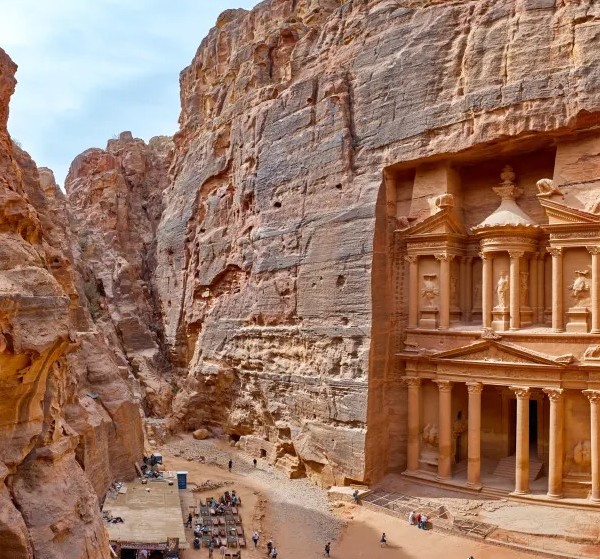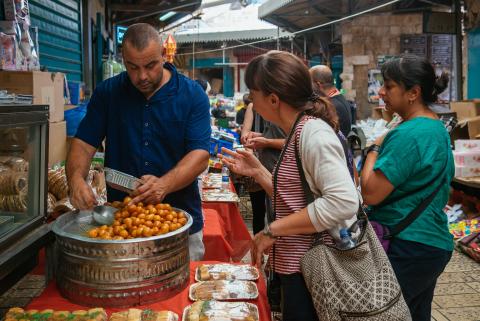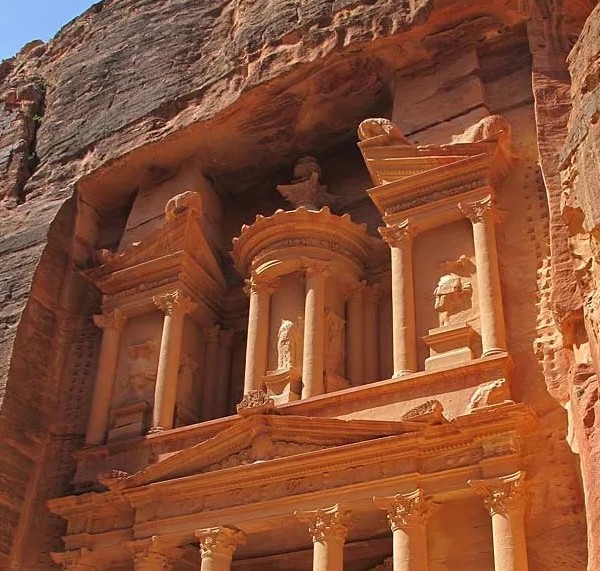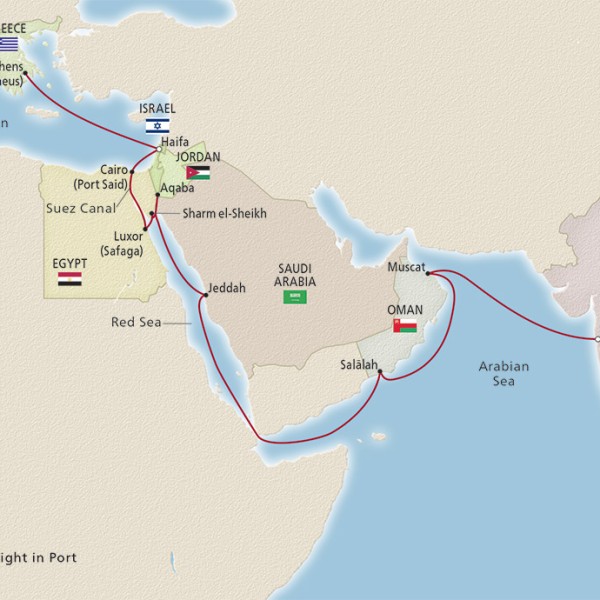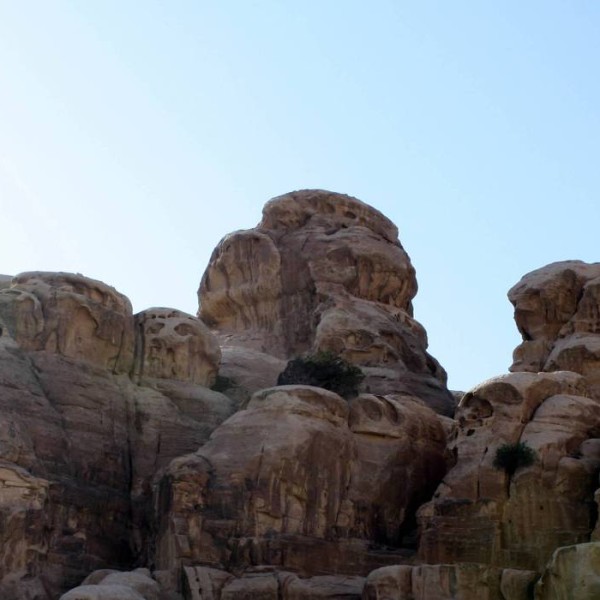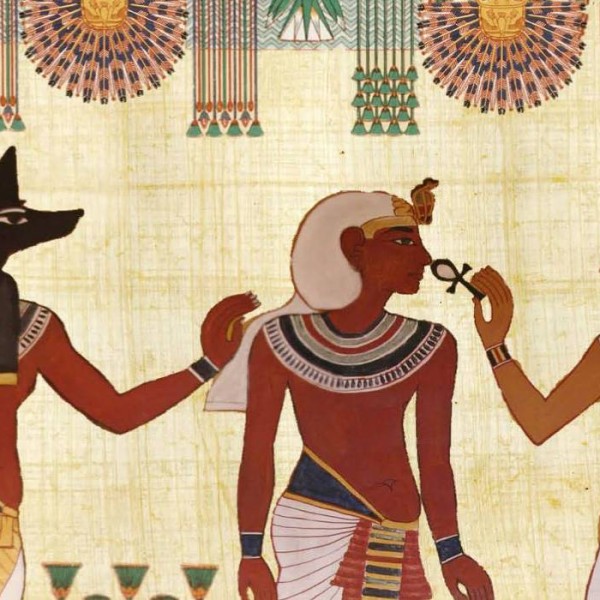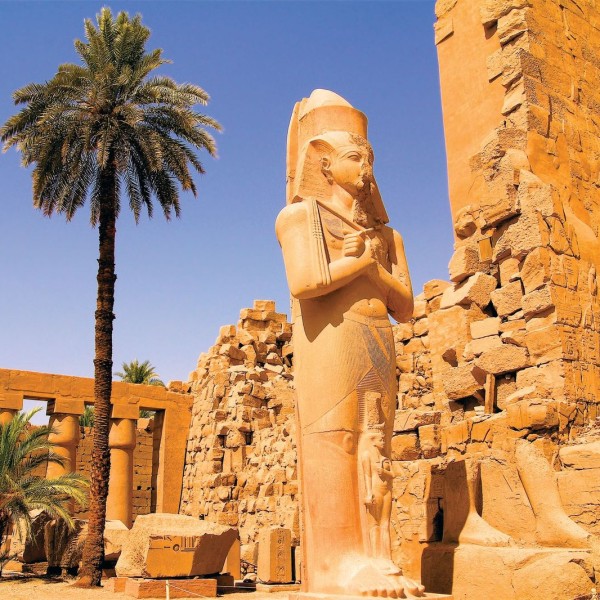Shalom from the comfort of the Hilton overlooking the beaches of sunny Tel Aviv, which feels positively freezing today at a mere 31C compared to last night at the Dead Sea in Jordan where the mercury topped out at 41C (according to my iPhone this ‘feels like 46C’!)
Jordan has been fantastic. We have covered a lot of ground in only 6 days, from Jerash in the North to Wadi Rum in the South so a fair bit of driving on pretty average roads with some ‘interesting’ local driving, but nothing compared to Pete’s epic around Turkey!
The flight from Tel Aviv to Amman would have to be one of the shortest I’ve ever taken, just 23 mins in the air with 20 mins of taxiing at each end. The meet and greet service on arrival by Jordan Circle Tours (Innovative Travel’s local agent) was very efficient and we were through customs and into our minibus quickly to meet our driver Elias and guide Osama. They were both absolutely superb.
Osama would have to be one of the best guides I’ve ever met; funny, engaging, insightful, empathetic and incredibly well-read. I’ve come away from Jordan with a far greater appreciation and understanding of ancient history and also modern Jordanian and the wider Arabic culture than I’d ever imagined and feel well educated about the uniqueness of life in what we call the ‘Holy Land’. His insights into the realities of modern Islam and patriarchal societies were especially interesting. You really appreciate the benefits of being on a guided private tour when they are this good.
 Our first day was pretty packed as we first headed into Amman to see the Roman theatre and citadel, then to the North to the very impressive and well maintained Roman city of Jerash.
Our first day was pretty packed as we first headed into Amman to see the Roman theatre and citadel, then to the North to the very impressive and well maintained Roman city of Jerash.
Later that afternoon we checked into the very nice House Boutique Suites hotel before our Arabic cooking class that evening. Run by 3 Jordanian sisters and staffed exclusively by women, all of whom were hilarious, this was a fun night out learning to make authentic Kofta and Hummus and then enjoying the fruits of our labours for dinner afterwards. I think my cooking may have improved since I last had an overseas cooking class (in Vietnam) as they didn’t need to take it away afterwards and make it more edible!
The next day we visited the King of Jordan’s incredible car and motorbike collection just outside of Amman, which is a ‘must do’ for enthusiasts. The armoured Rolls Royce car and Aston Martin DB2 were two of the many highlights for me. They also have the Martian Rover from the recent Matt Damon movie, which was filmed in Wadi Rum, along with many other films recently that need to simulate life on other planets!
From here, we started the journey South, with our first stop at Madaba to view the famous floor  mosaic in the church there, the oldest map of the Holy Land. Then on to the Franciscan run biblical site of Mt Nebo, where Moses saw the Promised Land and was apparently subsequently buried. The mosaics here are incredible, as is the dramatic elevated view of the ‘Holy Land’. Next stop was the Crusader castle at Kerak, apparently now the largest one remaining following the Syrian conflict. The legacy of the Crusaders is obviously not viewed at all favourably in historical terms in this part of the world, so something to perhaps reflect on in our own.
mosaic in the church there, the oldest map of the Holy Land. Then on to the Franciscan run biblical site of Mt Nebo, where Moses saw the Promised Land and was apparently subsequently buried. The mosaics here are incredible, as is the dramatic elevated view of the ‘Holy Land’. Next stop was the Crusader castle at Kerak, apparently now the largest one remaining following the Syrian conflict. The legacy of the Crusaders is obviously not viewed at all favourably in historical terms in this part of the world, so something to perhaps reflect on in our own.
We arrived in Petra late, a little relieved to have survived the haphazard local driving and potholed main highway thanks to Elias’ fantastic driving and checked into the Movenpick hotel, which is very nice, if a little bit tired now, but does boast the best possible location just across the road from Petra’s main entrance and impressive brand new museum.
Petra’s archeological site is huge with 15 significant places of interest to visit within the city. I had no concept of just how big until I was told we’d walked over 22km in our exploration of this vast city from 830am to 4pm. Everyone thinks of the walk (or horse/carriage ride) through the narrow Siq to the famous Treasury, probably because of the third Indiana Jones movie that made it so famous, but it’s so much more than that. Every turn in the path reveals another astonishing vista, and a guide is really essential to have a decent understanding of how the Nabateans lived (and were entombed!) in such comfort and sophistication over 2000 years ago. At the end, we walked up to the impressive monastery at the end of the city, which in 39C midday heat was a bit of a challenge, but glad we had made the effort.
This is Bedouin Land, and their vendors miss few opportunities to sell you their wares from makeshift stalls inside the site. They can be a little too persistent, a problem which has been recognised by the government, who are currently building them a huge craft market just outside the main site for them to move to, with free transport for tourists. This should improve the visitor experience.
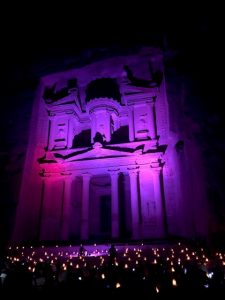 That evening we tried the Petra By Night experience, from 830-930pm also run by the local Bedouin tribe. Peter’s patented ‘death by cobblestones’ rating comes into play significantly here – I’d give it a solid 8/10, as walking 2km downhill to the Treasury in extremely dim (candle)light could be pretty hazardous to those not so steady on their feet. The show itself is pretty average, with traditional Bedouin flutist and singing, followed by what I think was a rambling and only occasionally coherent ghost story recounted by one of the performers. The local Bedouin men seated at the back of the candlelit Treasury talked all the way through, much to the annoyance of the tourists and plead not to take flash photos mostly fell on deaf ears, so despite the excitement at the end when they finally lit the Treasury up in multiple colours, I couldn’t help but think it could have been so much better.
That evening we tried the Petra By Night experience, from 830-930pm also run by the local Bedouin tribe. Peter’s patented ‘death by cobblestones’ rating comes into play significantly here – I’d give it a solid 8/10, as walking 2km downhill to the Treasury in extremely dim (candle)light could be pretty hazardous to those not so steady on their feet. The show itself is pretty average, with traditional Bedouin flutist and singing, followed by what I think was a rambling and only occasionally coherent ghost story recounted by one of the performers. The local Bedouin men seated at the back of the candlelit Treasury talked all the way through, much to the annoyance of the tourists and plead not to take flash photos mostly fell on deaf ears, so despite the excitement at the end when they finally lit the Treasury up in multiple colours, I couldn’t help but think it could have been so much better.
The next day we made the relatively short drive to Wadi Rum which, as I’m a massive fan of the classic movie Lawrence of Arabia, was always likely to be the tour highlight for me, and so it proved. Our accommodation was in the fabulous Sun City Camp in a signature ‘Martian Dome’ tent, named after the popularity of the aforementioned Matt Damon movie. It’s easy to see why you would use this amazing weathered sandstone landscape as a double for another planet – the sand is already pretty red, and gets everywhere(!), so the camera filters used in the movies only need to enhance what you already see. We really enjoyed the daytime jeep ride through this semi-desert and the sweet aromatic tea offered by the local Bedouin in their camp. Before the Wadi Rum ‘hangi’ style buffet dinner we had a sunset camel ride – be sure to hold on right during mounting and dismounting and you’ll be fine! Stargazing in the desert later was also a highlight, sitting in beanbags on the deck outside our tent.
There are also officially stargazing tours with powerful telescopes available locally for approx NZ$40 extra.
Our last day in Jordan was spent at the very flash Kempinski Ishtar, a huge resort overlooking the 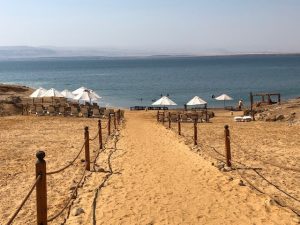 Dead Sea, about a 4hr drive North of Wadi Rum. As the Dead Sea is retreating about 1.5m each year as it evaporates, the hotel has added extra layers of swimming pools and terraces connected by stairs to bridge the gap between the main body of the hotel and the little private beach where you can lather on the famous mud and go for a float. Despite repeated warnings to avoid getting any seawater in your eyes (it stings like crazy with such high salt content), I failed, and was grateful for the chance to rinse off under the nearby showers.
Dead Sea, about a 4hr drive North of Wadi Rum. As the Dead Sea is retreating about 1.5m each year as it evaporates, the hotel has added extra layers of swimming pools and terraces connected by stairs to bridge the gap between the main body of the hotel and the little private beach where you can lather on the famous mud and go for a float. Despite repeated warnings to avoid getting any seawater in your eyes (it stings like crazy with such high salt content), I failed, and was grateful for the chance to rinse off under the nearby showers.
Your skin feels amazingly soft once you’ve washed the mud off though, completely exfoliated, so you can certainly appreciate why so many people come to this lowest point in earth for their health and beauty treatments.
We left Jordan via the King Hussein (Allenby) Bridge, aided by a facilitated (VIP) service which enabled us to make the crossing to the West Bank in well under an hour, rather than the 3 hours it can otherwise take. Having seen the queues and numerous security checkpoints, I’d highly recommend this option!
Jordan is not cheap, although possibly better value than Israel. The Jordanian Dinar is a very strong currency so it’s certainly not a ‘bargain’ destination in the Middle East as perhaps Egypt, Turkey or Morocco are sometimes perceived as being. It’s not as hi-tech as Israel, the food is a little less varied as much of the country is semi-desert and so there are challenges. Trade with neighbours Syria and Iraq is greatly diminished due to the conflicts in those countries, and Jordan is now heavily dependent on shipping brought into Aqaba and then north by road, so there are an awful lot of trucks on the main highway!
The challenge of the shortage of water (like much of this region) is apparent, but in a region in near continual strife, what’s striking is how stable and relatively prosperous Jordan is. Tourism is booming after a slump following the ‘Arab Spring’ unrests of the early 2010’s.
Jordanian’s respect and affection for the stabilising influence of their monarchy is very clear. The Arabic tradition of a generous welcome and hospitality is also evident everywhere, and that made for a great experience. There were lots of Italian tourists here in August, whereas Israel had lots of French visiting. There’s now a small lull while the Europeans go back to work and school before the high season begins in mid-September for both countries.
Jordan presents itself as a relatively moderate, progressive Muslim country where Kiwis can feel safe and welcome, and it’s not very big either – we managed to see the majority of the obvious highlights in just 6 days, although we didn’t want to leave at the end!





